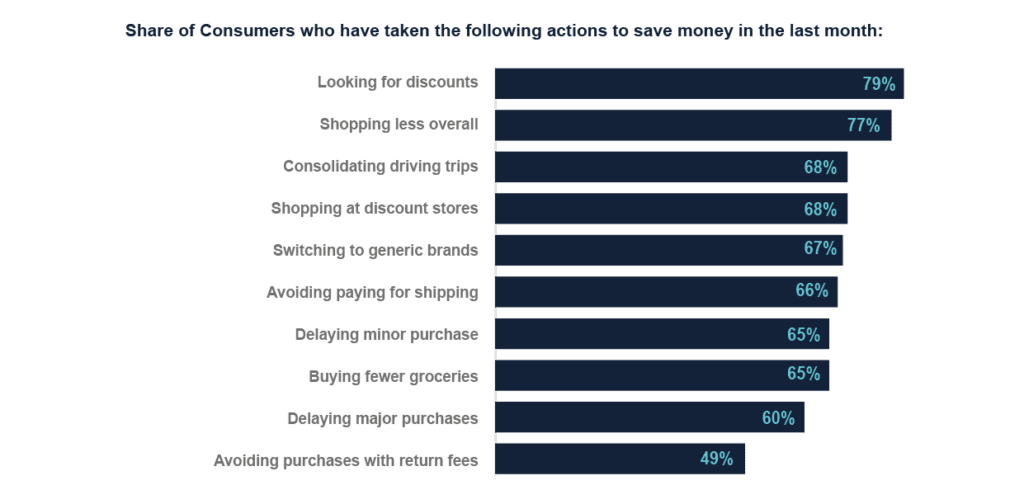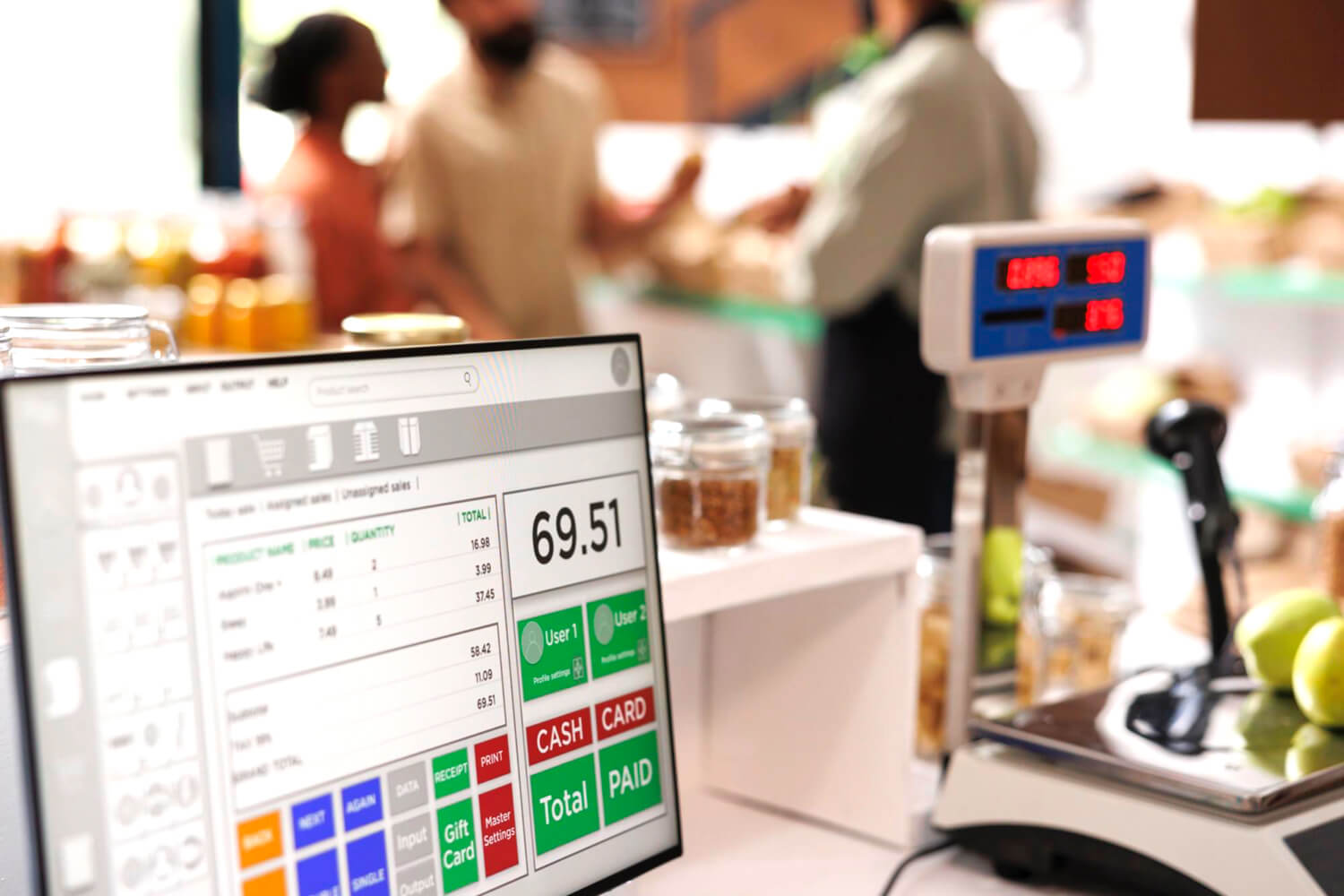
Continued High Inflation Impacting Consumer Behavior
With inflation at record levels throughout 2022, consumers are rethinking how they spend their money.
The inflation report released by the U.S. Bureau of Labor Statistics‘ for October 2022 shows the inflation rate is at 7.7%, down from 8.2% in September 2022. Although total inflation is consistently declining from the June peak of 9.1%, this will be a slow process and will not be uniform across categories. We are already starting to see a reduction in the price of goods, but services will likely be slower to adjust. Predictions show that we will end 2022 at 8% and end 2023 at about 3.5%.
United States annual inflation rates (2018 to 2022)
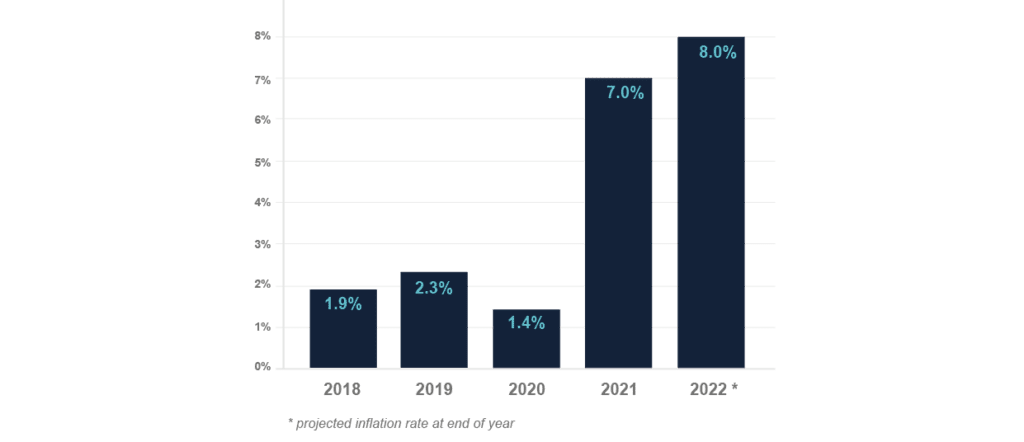
As far back as July 2021, surveys showed that consumers were feeling the impacts of inflation and adjusting their purchasing behaviors accordingly. At the time, inflation was at 5.4%.
Consumer perception of inflation
Every product category is impacted differently, both from an inflation rate perspective, as well as how consumers perceive changes. According to a survey conducted by Morning Consult in July, consumers felt the largest increase in Gasoline and Grocery categories, which lines up with the actual inflation. Although both categories have started to come down, they are meaningfully higher than they were last year (gasoline +17.5% food at home +12.4%).
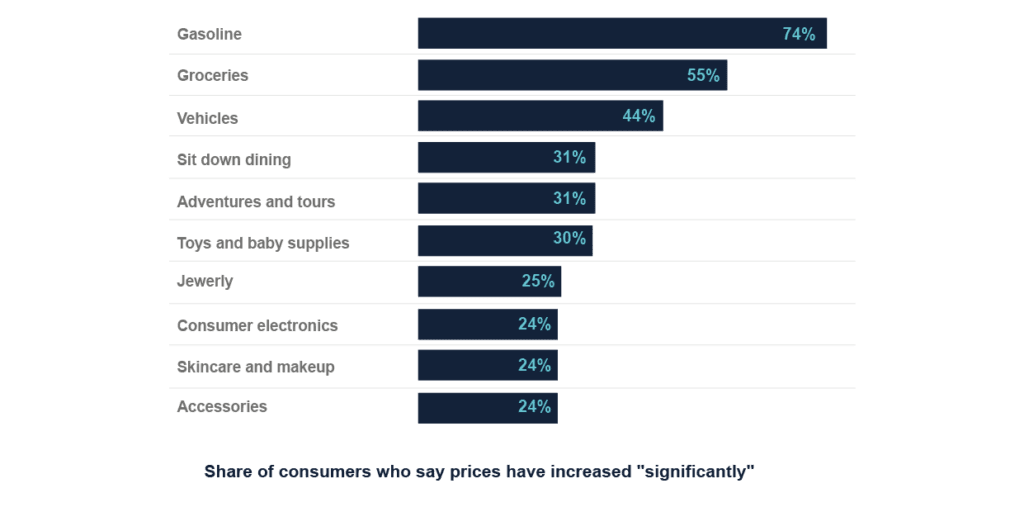
Impact across income levels
While lower income individuals had to cut back spending and focus on essential items, the wealthiest group saw nearly no change, even increasing spending in some luxury areas. This duality is expressed by Target missing analyst expectations on Q2 while high end retailer Lululemon, overachieved their sales projections for Q2 and Ferrari exceeding expectations for Q3, raising their total year guidance.
High and middle income groups did experience strain in the form of market losses. According to data that Moody’s Analytics shared with The Wall Street Journal, the middle class has actually saved less than most people who make less than them since the pandemic began. Mid-priced stores, like Gap and Kohl’s are seeing less spending per visit, contributing to them reducing their financial outlook. The most recent US Census Bureau’s Monthly Retail Sales Report reflects this, showing a monthly decrease in most non-essential spending categories, with the exception of food and clothing, likely spurred by back to school shopping.
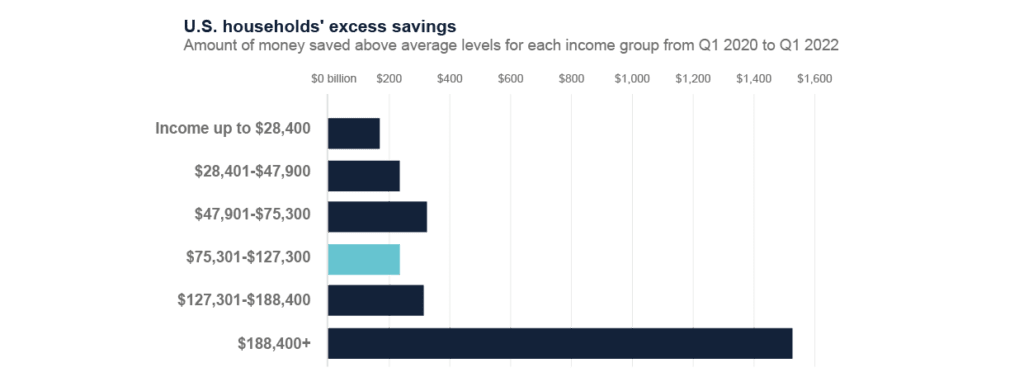
How retailers can be strategic with both margins and customer satisfaction
From the perspective of retailers, what does this mean for them? How can they be both strategic with margins and customer satisfaction?
For this answer, we look to the changes consumers have made to account for the higher prices.
